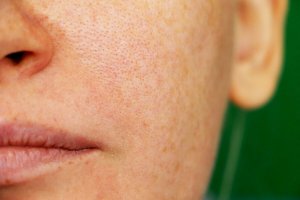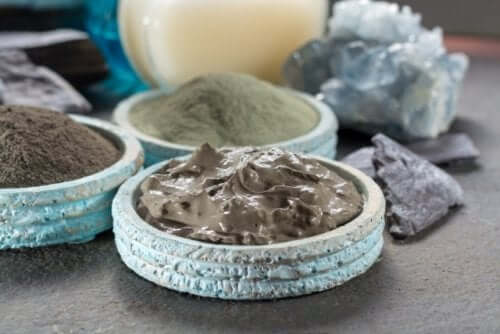Three Natural Remedies for Melasma

Melasma is scientifically known as chloasma faciei and usually affects women who become pregnant. In this article, you’ll discover some natural remedies for melasma.
Despite the fact that melasma usually affects pregnant women, some studies show that it also occurs in men. The reason is that facial melasma usually shows itself in areas that are exposed to the sun. Thus, prolonged sun exposure can make melasma manifest itself.
How to identify melasma
If you have brown spots on your cheeks or also on your forehead, you may be dealing with a dyschromia that may be melasma. Next, you’ll see some natural remedies for melasma that can help improve your skin’s appearance.
Natural remedies for melasma
1. French maritime pine bark extract

According to studies, the depigmenting effect of French maritime pine bark extract has yielded positive results in the case of facial pigmentation, making it an effective remedy for melasma. According to the study, this treatment was safe and effective.
The conclusions were clear. The treatment with French maritime pine bark extract was a complete success and improved the quality of life of patients, as well as their skin. This is because this remedy increases moisturization and elasticity and also helps delay skin aging. But how can you take advantage of it?
To benefit from this remedy, you need to consume it orally. You can find French maritime pine bark extract by the name of pycnogenol supplements.
You may like this article: How to Treat Melasma with Yogurt, Bananas and Lemons
2. Vitamin C
Another of the natural remedies for melasma consists of providing the skin with vitamin C. Why is this vitamin so important? Due to its powerful antioxidant action, it helps the skin look luminous, more elastic, and have a more uniform appearance.
Also, it favors the elimination of spots. How can you use this remedy?
- You can apply it topically by purchasing vitamin C concentrate at any natural store.
- Firstly, apply the concentrate at night after fully cleansing your skin.
- Apply it as a serum or oil.
- If you have very dry skin, you can apply your favorite moisturizer over it.
This article may interest you: 6 Vitamins You Must Have in Your Diet
3. “Santa Lucia” peloids

Experts also analyzed this remedy for melasma, which yielded quite encouraging results. “Saint Lucia” peloids are known as “medicinal muds”. They consist of medicinal mineral water and a solid component, which is what makes it look like clay.
Its properties help treat skin problems such as psoriasis or acne. Also, its benefits help improve melasma.
You’re probably wondering how you can use this natural remedy. Well, you can buy it as a mask. Firstly, apply it directly to your skin, following the instructions on the package, and then remove with water.
All the melasma remedies we mentioned in this article are natural. This means that, despite the good results experts observed, you need to apply them consistently to make sure your melasma disappears progressively.
Finally, if you have any other skin condition or are following a treatment, it’s important to discuss these options with your dermatologist before trying them out. In addition, more studies are needed to demonstrate the effectiveness of the proposed remedies. Have you ever tried these three natural remedies for melasma?
All cited sources were thoroughly reviewed by our team to ensure their quality, reliability, currency, and validity. The bibliography of this article was considered reliable and of academic or scientific accuracy.
- Estrella, V, Nipotti, J, Orive, M, & Fernández Bussy, R. (2015). La piel y sus nutrientes. Revista argentina de dermatología, 96(2), 117-133. Recuperado en 04 de marzo de 2019, de http://www.scielo.org.ar/scielo.php?script=sci_arttext&pid=S1851-300X2015000200010&lng=es&tlng=es.
- Jiménez, A. Y. P. (2010). Uso de los peloides de “Santa Lucía” en el Acné Polimorfo. MediCiego, 16(2).
- Pérez Jiménez, A. Y., García, M. F., López, A. M., Martín, J. M. M., & García, L. F. (2012). Uso de los peloides de “Santa Lucía” en el melasma. Mediciego, 18(s1).
-
Sarkar R, Ailawadi P, Garg S. Melasma in Men: A Review of Clinical, Etiological, and Management Issues. J Clin Aesthet Dermatol. 2018;11(2):53-59.
- Alvarez, Judith. (2014). Efecto despigmentante del extracto de Pino Marino Francés (Pycnogenol®) en pacientes con hipercromía facial. Archivos Venezolanos de Farmacología y Terapéutica, 33(1), 1-6. Recuperado en 03 de agosto de 2020, de http://ve.scielo.org/scielo.php?script=sci_arttext&pid=S0798-02642014000100001&lng=es&tlng=es.
This text is provided for informational purposes only and does not replace consultation with a professional. If in doubt, consult your specialist.








